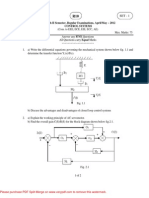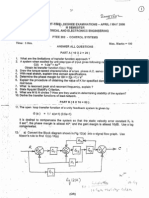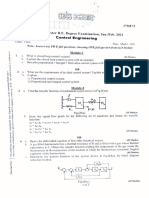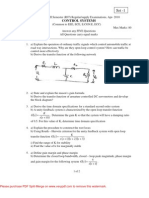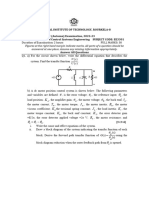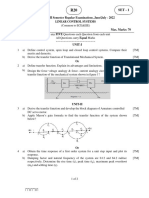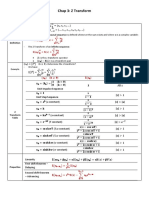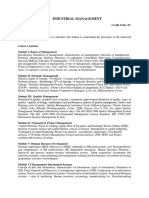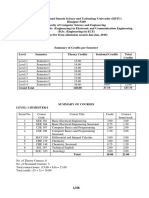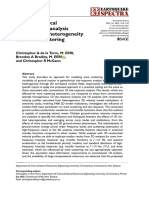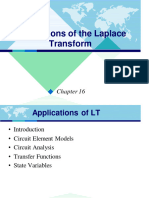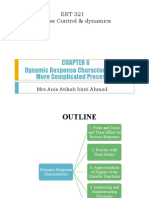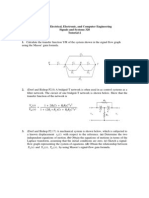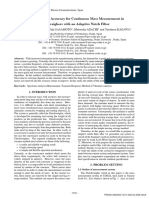Full Name: Lab 2
Email: ID:
Course: Theory of Linear Control Systems Term: Fall 2024
Instructor: Mr, Kuanysh Yessenzhanov Date: 22nd
October, 2024
Problem 1
Find the closed-loop transfer function of the following system usign SFGs
Y (s)
• First set N = 0, find the transfer function of R(s)
Y (s)
• Secondly set R = 0 and find the transfer function of N (s)
• Express Y (s) in terms of R(s) and N (s) when both inputs are applied simultaneously
• Find the desired relation among the transfer functions G1 (s), G2 (s), G3 (s), G4 (s), H1 (s),
and H2 (s) so that the output Y (s) is not affected by the disturbance signal N (s) at
all.
Solution:
Problem 2
The block diagram of an electric train control is shown in the figure below. The system
parameters are
• er (t) - voltage representing the desired train speed, V
• v(t) - speed of train, f t/sec
• M - mass of train = 30000lb
• K - amplifier gain
• Kt - gain of speed indicator = 0.15V /f t/sec
1
� To determine the transfer function of the controller, we apply a step function of 1 volt to
the input of the controller, that is, ec (t) = us (t). The output of the controller is measured
and described by the following equation:
f (t) = 100(1 − 0.3e−6t − 0.1e−10t )us (t)
Then
• Find the transfer function Gc(s) of the controller
V (s)
• Derive the forward path transfer function E(s) of the system.The feedback path is
opened in this case.
Solution:
Problem 3
For each of the characteristic equations of feedback control systems given, solve manu-
ally with Hurwitz’s, Lienard-Shipar’s and Routh’s method to determine the range of K so
that the system is asymptotically stable. Determine the value of K so that the system is
marginally stable. Then verify with MATLAB that your solution is correct.
• s4 + 25s3 + 15s2 + 20s + K = 0
• s4 + Ks3 + 2s2 + (K + l)s + 10 = 0
• s3 + (K + 2)s2 + 2Ks + 10 = 0
• s3 + 20s2 + 5s + 10K = 0
• s4 + Ks3 + 5s2 + 10s + 10K = 0
• s4 + 12.5s3 + s2 + 5s + K = 0
• Draw the root-locus plot (Poles and zeros)
• Show corresponding step responses
Solution:
Problem 4
The following transfer function of an open-loop system is shown below:
M (s + 5)
T (s) = G(s)H(s) = (1)
s(s + 2)(1 + Ls)
Find the range of stability of a closed-loop system based on parameters M and L. Sketch
the plane in which the horizontal axis is denoted by M and vertical axis is L. Show the
constraints in which the system is marginally stable and unstable.
Show it both manually and with MATLAB. Draw your plane in MATLAB.
Solution:
Problem 5
For the following block diagram represented below, obtain the region of tachometer constant
Kt in which the system is marginally stable.
2
� • Show it manually with Algebraic criterion for stability
• Proof with MATLAB
Solution:
Problem 6
Find the following transfer functions for Signal-flow-graphs shown below
Solution:





